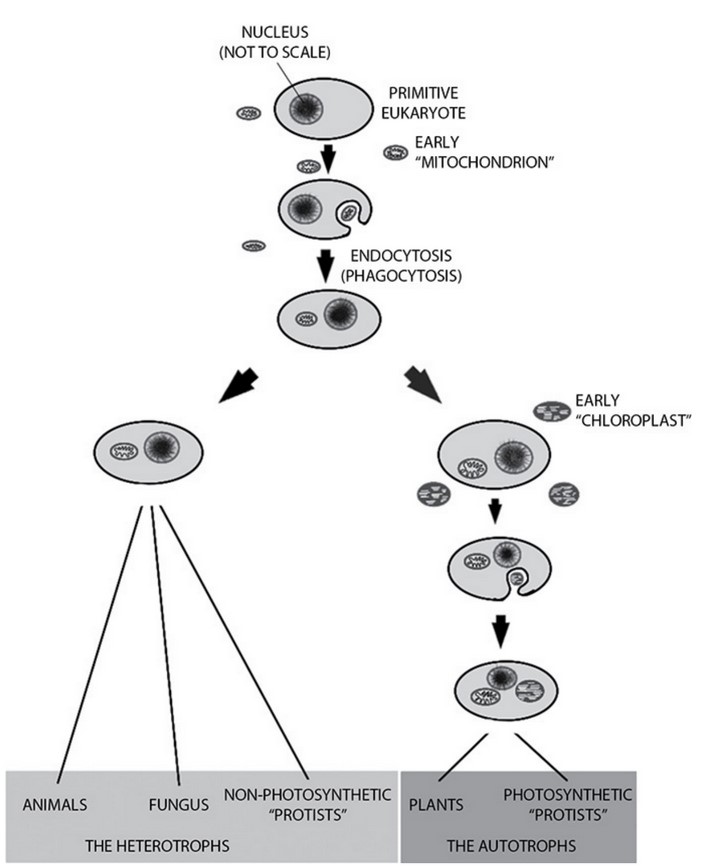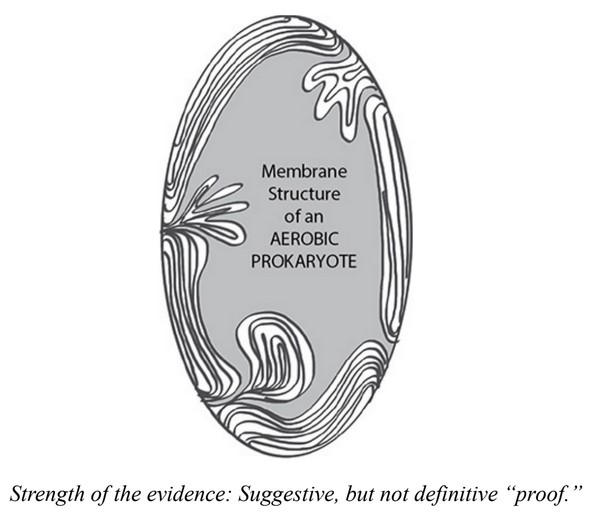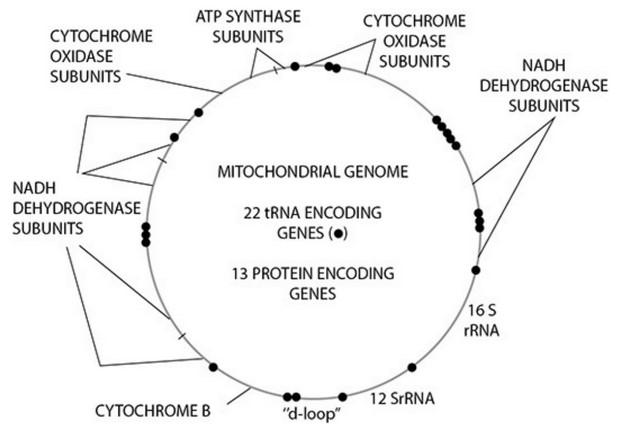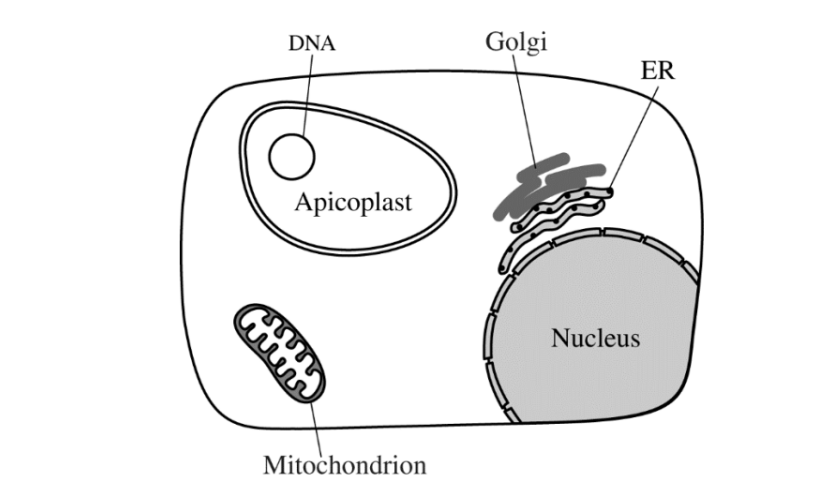Question
The endosymbiotic theory (also known as symbiogenesis) is an evolutionary theory that explains the origin of eukaryotic cells from
prokaryotic cells. According to this theory, the mitochondria and plastids (including the chloroplast) were once free-living bacteria that
were engulfed by a primitive eukaryote about 1.5 billion years ago (see the following diagram).
State four pieces of evidence that support the endosymbiotic theory of the mitochondria (or chloroplast). For each piece of evidence, provide a brief evaluation (less than one sentence) of the strength of the evidence.
▶️Answer/Explanation
Ans:
Mammalian cells contain between 800 and 2,500 mitochondria.
Erythrocytes (red blood cells) contain none. The range in the number of
mitochondria is from as few as one or two to as many as a half million!
The mitochondria and chloroplasts as obligate cellular symbiotes is an
example of co-evolution (see answer 99) that is also a parallel
diversification.
If the AP Biology exam asks for four pieces of evidence, provide only four.
They will give you points only for the first four if you provide more, so
giving more will only waste time. Choose the four you can explain best.
Because there’s a lot of evidence to support the endocytic origin of the
mitochondria (and chloroplasts), and the AP Biology readers are not
grading this answer, more than four are provided here:
(1) Mitochondria (and chloroplast) are similar in size and shape to
many prokaryotic cells.
Strength of the evidence: Suggestive, but not definitive “proof.”
(2) Endocytosis wraps the engulfed particle within a membrane derived
from the plasma membrane of the engulfing cell. Mitochondria have
two membranes, inner and outer membranes, which are structurally
and biochemically (composition) different. The inner membrane is
highly convoluted (into cristae), like that of the plasma membrane of
an aerobic prokaryote. The lipid and protein composition of the
inner membrane is more similar to a eubacteria than a eukaryote.
(3) The mitochondria (and chloroplasts) can reproduce semi-
autonomously through binary fission (not mitosis). The number of
mitochondria in a cell can change throughout the cell’s lifetime
regardless of whether it has undergone any cell division.
Strength of the evidence: Suggestive, but not definitive “proof.”
(4) The mitochondria, like eubacteria, have their own circular
chromosome that lacks histones and introns.
Strength of the evidence: Pretty convincing.
(5) Many of the genes from the original mitochondria have been
transferred to the nucleus (it’s called endosymbiotic gene transfer,
and it makes the mitochondria dependent on their host cell).
Strength of the evidence: Pretty convincing if the method for
determining the nuclear genes originated from the mitochondria.
(6) The mitochondrion has its own ribosomes. The large subunit of the
mitochondrial ribosome is more similar to the prokaryotic ribosome
than the ribosomes in the cytosol.
Strength of the evidence: Pretty convincing.
(7) Antibiotics that work by blocking protein synthesis in eubacteria
(like streptomycin) also block protein synthesis in mitochondria (and chloroplasts) but not cytosolic ribosomes.
Antibiotics that work by blocking RNA polymerase in eubacteria
block RNA synthesis in mitochondria (and chloroplasts) but not in
the eukaryotic nucleus (rifampicin).
Inhibitors of eukaryotic protein synthesis (like the diphtheria toxin)
do not inhibit protein synthesis in the mitochondria (or chloroplast).
Strength of the evidence: Pretty convincing.
The Oxygen Catastrophe of 2.3 BYA
Aerobic metabolism (and multicellularity) evolved after the oxygen
gas released by cyanobacterial photosynthesis significantly
accumulated in the atmosphere. Most organisms could not tolerate
the oxidizing atmosphere. This “oxygen catastrophe” caused many
prokaryote species to become extinct.
The original endocytosis of the mitochondria occurred between 1.7
and 2 billion years ago and was not followed by its digestion. It’s
possible that the organelle initially served to detoxify oxygen for its
host by converting it to water. Because the reduction of oxygen to
water is spontaneous, any cells that could use oxygen to drive electron
transport chains would certainly have had an advantage.
The free energy change from the spontaneous, exergonic movement
of electrons from organic molecules to oxygen is very large, meaning
that a lot of energy is available to couple the synthesis of ATP.
Question

Figure 1. Simplified diagram of the cellular structures of Plasmodium falciparum
The eukaryotic protozoan parasite P. falciparum is the causative agent of malaria. P. falciparum cells contain an organelle called the apicoplast (see Figure 1). Apicoplasts synthesize precursors of biomolecules that are required for growth and reproduction of the parasite.
(a) Based on Figure 1, describe TWO pieces of evidence a researcher could use to support the claim that apicoplasts evolved from free-living, prokaryotic organisms.
(b) Doxycycline is a drug used to treat malaria and some bacterial infections. Doxycycline binds to the prokaryotic 30S ribosomal subunit and inhibits its function. Explain how doxycycline can be an effective treatment for a P. falciparum infection in humans.
▶️Answer/Explanation
Description (2 points maximum)
• Possesses a double membrane
• Possesses DNA
Explanation (2 points maximum)
• Apicoplasts possess 30S/prokaryotic ribosomes
• Prokaryotic/apicoplast proteins are not synthesized (in presence of doxycycline)

Question
Cellular respiration includes the metabolic pathways of glycolysis, the Krebs cycle, and the electron transport chain, as represented in the figures. In cellular respiration, carbohydrates and other metabolites are oxidized, and the resulting energy-transfer reactions support the synthesis of ATP.
(a) Using the information above, describe ONE contribution of each of the following in ATP synthesis.
- Catabolism of glucose in glycolysis and pyruvate oxidation
- Oxidation of intermediates in the Krebs cycle
- Formation of a proton gradient by the electron transport chain
(b) Use each of the following observations to justify the claim that glycolysis first occurred in a common ancestor of all living organisms.
- Nearly all existing organisms perform glycolysis.
- Glycolysis occurs under anaerobic conditions.
- Glycolysis occurs only in the cytosol.
(c) A researcher estimates that, in a certain organism, the complete metabolism of glucose produces 30 molecules of ATP for each molecule of glucose. The energy released from the total oxidation of glucose under standard conditions is 686 kcal/mol. The energy released from the hydrolysis of ATP to ADP and inorganic phosphate under standard conditions is 7.3 kcal/mol. Calculate the amount of energy available from the hydrolysis of 30 moles of ATP. Calculate the efficiency of total ATP production from 1 mole of glucose in the organism. Describe what happens to the excess energy that is released from the metabolism of glucose.
(d) The enzymes of the Krebs cycle function in the cytosol of bacteria, but among eukaryotes the enzymes function mostly in the mitochondria. Pose a scientific question that connects the subcellular location of the enzymes in the Krebs cycle to the evolution of eukaryotes.
▶️Answer/Explanation
Ans:
(a) The catabolism of glucose provides the raw materials for the further stages of cellular respiration. First, NADH is produced for use as a proton donor in the electron transport chain. Second, oxidized pyruvate is provided for the Krebs’s Cycle. The Krebs’s cycle produces NADH and FADH, which are necessary proton donors in the electron transport chain, The formation of a proton gradient in the electron transport chain uses energy from the previous processes to pump protons across the inner membrane. This is necessary because the cell then harnesses the energy of this concentrations gradient by using the H+ ions to pass through the ATP Synthesis molecules which creates ATP by pressing ADP and Pi together.
(b) The fact that all organisms perform glycolysis is an example of a homologous cellular process and suggests all life are descended from one common ancestor capable of performing the reaction. Glycolysis occurring in anaerobic conditions is further evidence since the early Earth atmosphere had low concentrations of O2 so the process had to be anaerobic. Finally, occurring in the cytoplasm is necessary because the process had to be performed by a very simple organism lacking internal membrane structures.
(c) Energy from hydrolysis of 30 md ATP = 30 mol . 73 kcal/mol = 219 kcal
1 md glucose . 30 mol ATP / mol glucose = 30 mod ATP = 219 kcal
% Efficiency = 219 kcal / 686 kcal 100% = 31.9%
Excess energy is lost to the environment as heat.
(d) Do mitochondria I modern eukaryotes descend from endocytosed prokaryotes that could perform the kreb’s cycle?
